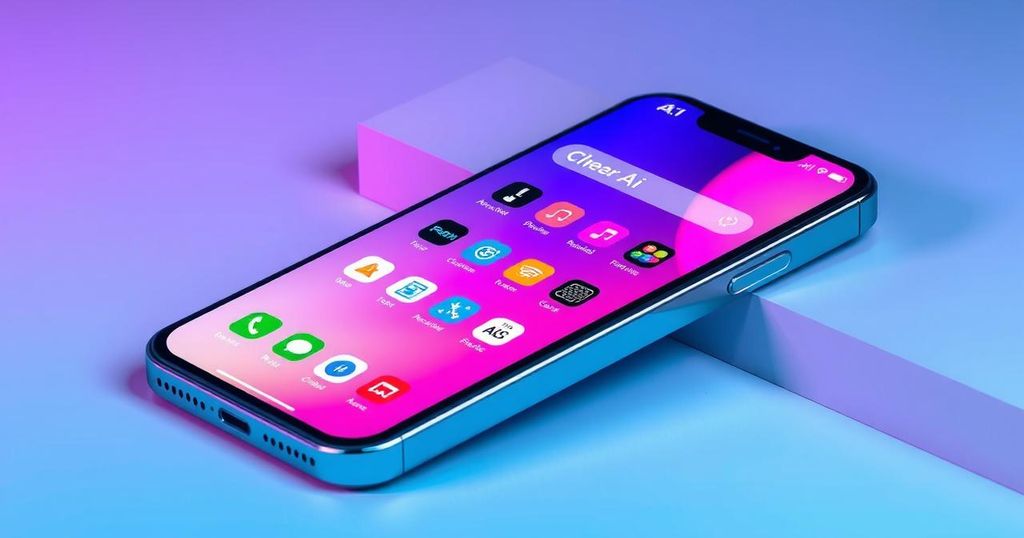Navigating Apple Intelligence: Choosing to Opt In or Turn Off AI Features
Apple’s AI initiative, dubbed Apple Intelligence, is facing mixed feedback from users, with a majority uninterested in its features. Storage concerns and limited perceived value contribute to users opting out of the technology. Disabling Apple Intelligence is straightforward, allowing users to reclaim space and take control over the AI experience on their devices.
Apple’s push into artificial intelligence, dubbed Apple Intelligence, is generating mixed reactions. Despite a measured rollout compared to its competitors, early adopters have faced issues like delayed voice responses and quirky image generation. A recent survey by ZDNET and Aberdeen shows a significant portion of U.S. adults – around 64% – aren’t interested in most AI features, and only 8% would pay more for them. Nonetheless, 58% see value in AI-assisted photo editing.
The ease of disabling Apple Intelligence is a relief for those not fully bought into the AI trend. Some users may decide to temporarily use fewer features, or all of them, depending on what they find helpful. Tools like Image Playground and Genmoji can take up to 7GB of device storage, a hefty amount for those already navigating tight storage space limits. Given the costs involved, it’s understandable if some people would rather disengage from Apple Intelligence right now.
Why would someone want to opt out? Well, a whopping 73% of Apple users feel AI brings little to their experience, according to a SellCell survey. Others just can’t be bothered with features that deliver inaccurate outputs or that they can find elsewhere. While earlier iOS updates would automatically reactivate Apple Intelligence, the latest iOS 18.4 respects users’ settings, letting you decide when and if you want to toggle it on.
It’s a curious scenario when users feel like they’re the ones beta-testing Apple’s features. And let’s face it, while some may appreciate neat tools like the Clean Up feature in Photos, it’s a work in progress. Apple Intelligence is primarily designed for newer devices, specifically the iPhone 15 Pro, iPhone 16 series, and the latest M-series Macs and iPads.
If storage space is a concern for you, tracking how much Apple Intelligence is using is straightforward. Just head over to Settings > General > iPhone (or iPad) Storage > iOS (or iPadOS). After disabling Apple Intelligence, it might still show up in iOS storage, but the system should reclaim it if necessary.
To completely shut down Apple Intelligence on your device, those steps are simple enough. For iPhones and iPads, go to Settings, then Apple Intelligence & Siri, and finally toggle off Apple Intelligence. Be mindful, turning it off means losing out on features like writing tools, notification summaries, image generation, and the ChatGPT support for Siri.
But what if you only want to limit some features instead of going cold turkey? You have the option to selectively turn off parts of Apple Intelligence directly within their respective apps. For example, you can disable message summaries in the Messages settings or just fine-tune how Writing Tools affect your text across all apps.
Alternatively, using the Screen Time settings can provide another level of control over Apple Intelligence features. Open Settings, navigate to Screen Time > Content & Privacy Restrictions, and you can manage what users – especially kids – can access on their devices. This essentially lets you decide which AI capabilities, like Image Creation or the ChatGPT extension, should be active or not.
As iOS continues to develop, it’s clear that responses to Apple Intelligence will likely evolve as well. For now, whether to embrace or disable these AI features is firmly in users’ hands, giving them the autonomy to shape their digital experiences to match their preferences.
In short, Apple Intelligence has sparked a blend of intrigue and hesitation among users. Many are wary of its integration due to storage concerns and varying perceived usefulness. While the flexibility to disable the feature is a plus, it’s clear that as Apple hones its AI offerings, user feedback will play a critical role in its future development. For now, users can make the choice to opt in, or just as easily, opt out.
Original Source: www.cnet.com




Post Comment